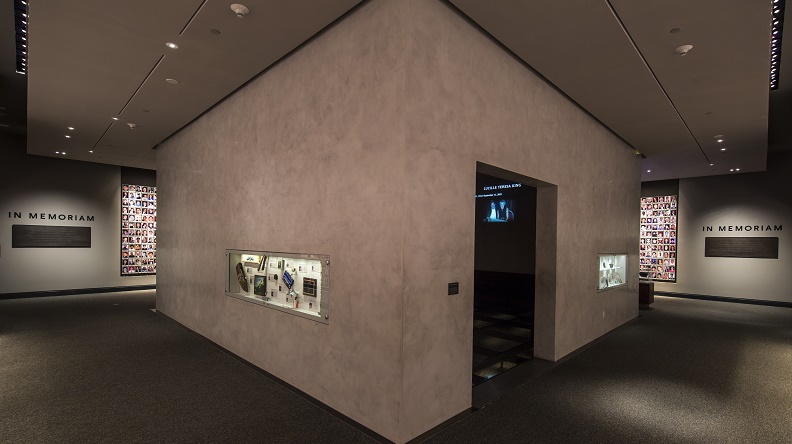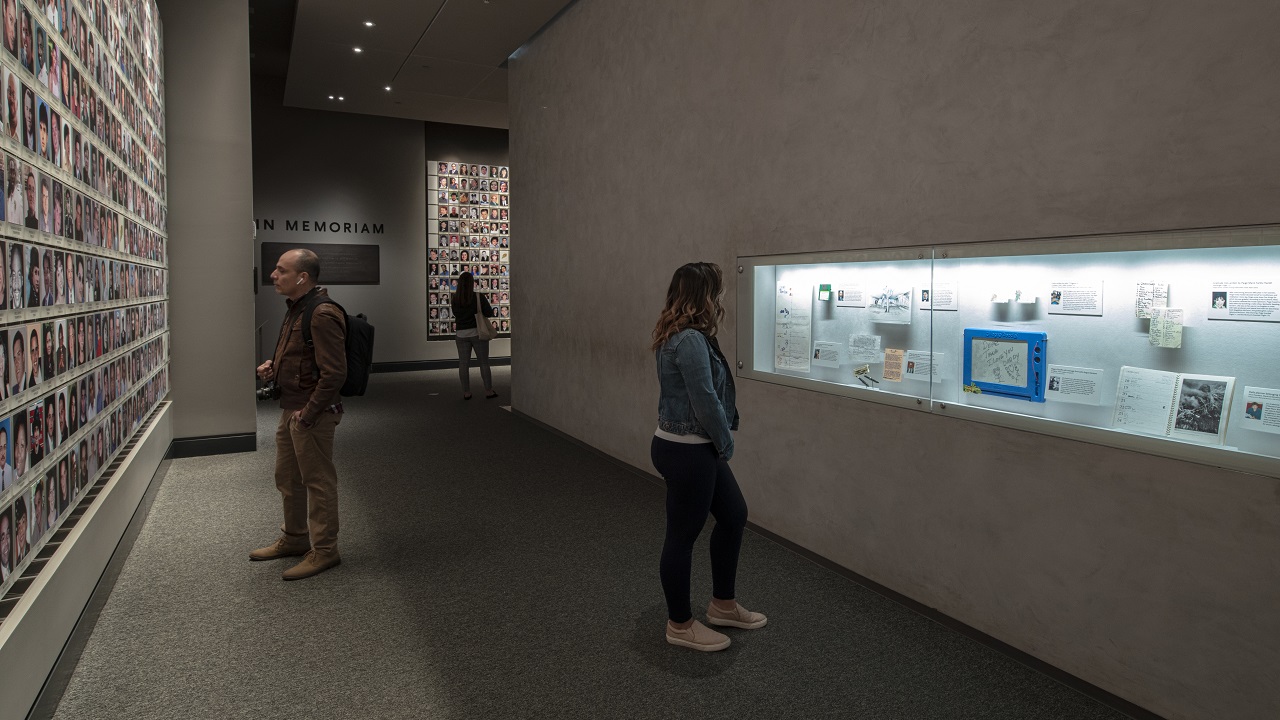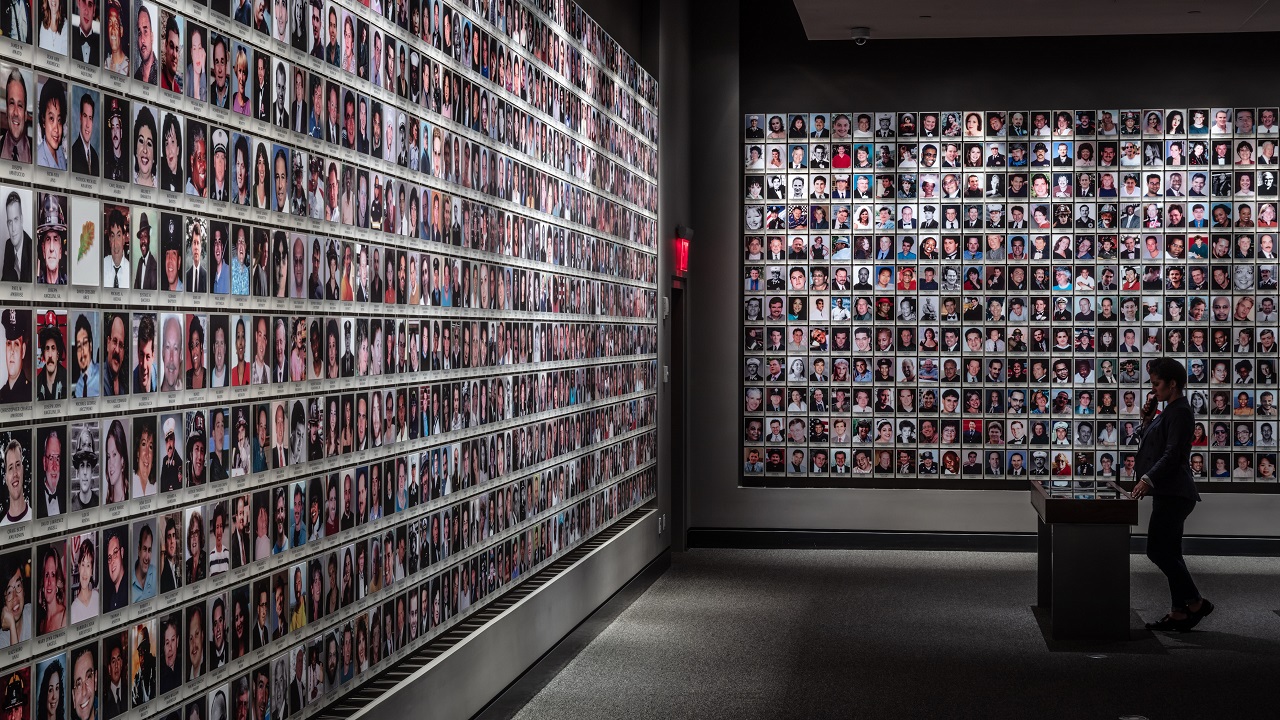Make a donation to the museum
In Memoriam
The memorial exhibition honors the 2,977 individuals killed as a result of the terrorist attacks of September 11, 2001 and the six individuals killed in the bombing of the World Trade Center on February 26, 1993.

About the Exhibition
Immediately conveying the enormity of loss, a floor-to-ceiling presentation of 2,983 portrait photographs surrounds visitors as they enter the gallery. These four walls present a true cross-section of humanity, ages two and a half to 85, from more than 90 nations, spanning the spectrum of ethnicities, socioeconomic sectors, and faith traditions.
The gallery’s inner chamber provides a more intimate space for remembrance. Profiles of victims are projected onto the walls of this room along with personal photographs and recorded remembrances left by family members, friends, and former colleagues.

Objects on View
Artifact cases feature displays of recovered property and objects reflecting the interests and activities of the victims before their lives were cut short. New artifacts are displayed annually.
Beaded bag worn by Kathryn L. LaBorie, purser on Flight 175
Collection 9/11 Memorial Museum, Gift of Eric LaBorie in memory of Kathryn LaBorie
Kathryn LaBorie’s husband, Eric, described his wife as loving “the sparkle and prettiness of life.” He noted that her wardrobe often mirrored her “bright, happy, and vibrant” personality. Friends and family also recall her as “vivacious” and “adventurous,” whether going out dancing in this outfit or at work in her airline uniform. Eric remembered other sides of Kathryn, describing how she taught him to approach life with kindness. In turn, he taught her the benefits of T-shirts and jeans and convinced her to try flip-flops for the first time.

Case for musical mix by Suria Rachel Emma Clarke, Vice President for Media Relations, Marketing/Client Services, and eSpeed at Cantor Fitzgerald
Collection 9/11 Memorial Museum, Gift of Alex, John, Tom, and Jack Clarke in memory of Suria
For Christmas 2000, Suria Clarke and her siblings each created a mixtape of songs with personal meaning as a present for their mother. After 9/11, Suria’s family took “enormous comfort” in her selections and converted the tape to a CD. The notes Suria made to accompany her choices provide a glimpse of her personality, from a memory of her grandfather to the music she played when she wanted to “rampage.” Of one song, she wrote, “Can’t listen to this without feeling you can do anything you want to do.”

Mission to Remember: Acquiring Artifacts
As part of our mission to honor the victims of the September 11, 2001 and February 26, 1993 terrorist attacks, the 9/11 Memorial Museum works with family members, close friends, and coworkers to collect artifacts and spoken remembrances that illustrate the lives, personalities, and passions of those who were killed.
In the video below, Executive Vice President of Collections and Chief Curator Jan Seidler Ramirez shares how her team collects objects for display in the Museum.
